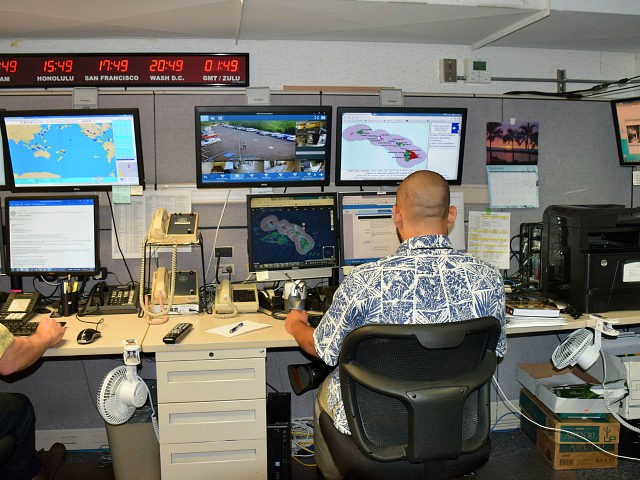The Hawaiian Emergency Management Agency has fired the individual responsible for the false ballistic missile alert issued last month, and the state has promised to fix the system.
High on the list of reforms is the introduction of a system to quickly repeal mistaken alerts; the state government took 38 minutes to reverse the warning issued last month.
U.S. Pacific Command (USPACOM), with an area of responsibility that “encompasses about half the earth’s surface,” is still “learning” about the Hawaii incident and the military’s role in such an event.
The disconnect between the military and state agencies tasked with monitoring threats was revealed last week after the Washington Post obtained emails from Pacific Command through the Freedom of Information Act.
The Post reported that, after reviewing the redacted emails, a Pacific Command spokesman, Navy Commander David Benham, would not answer specific questions raised by Adm. Harry Harris, the chief of U.S. Pacific Command, in the thread of communications between him and other top military officials.
“We are a learning organization,” Benham told the Post, “and took this false alert as an opportunity to review and improve our communication and coordination with state and federal emergency management agencies.”
Benham’s answer aside, the emails show that the U.S. military was not directly involved in any of the processes during the false alarm, which resulted in widespread panic on the islands before the word spread that it was only a test and not an actual attack.
“Apparently, they were getting ready to do a drill when the ‘drill’ part was lost in translation,” Harry Harris wrote to Gen. Joseph F. Dunford Jr., chairman of the Joint Chiefs of Staff, an hour after the message was sent. “Totally uncoordinated with us of course.”
The Post reported:
U.S. Pacific Command began responding to media questions about the alert by 8:23 a.m., saying there was no threat and state officials would issue a correction. Harris’s email to Dunford and other senior Pentagon officers indicated that the notification system “worked as we hoped it would” and that Pacific Command had several tasks to do.
“There will be heavy press play here, for sure, which we’ll handle for those questions which concern PACOM forces,” Harris wrote. “Will also work with the State of Hawaii and internal to PACOM — am sure there are lessons learned where we can improve.”
However, there was “a lot of explaining by the State of Hawaii to do,” Harris added.
Harris also emailed the top Air Force officer in the Pacific, Gen. Terrence J. O’Shaughnessy, asking for information about a warning sent out on Joint Base Pearl Harbor-Hickam in Hawaii.
“Just for my education and edification, when the Big Voice went off at Pearl Harbor-Hickam this morning, there was no indication that this was a drill; in fact just the opposite,” Harris wrote. “So, what happens on the flight line, and what message, if any, was passed to aircraft in the air?”
O’Shaughnessy said air-traffic controllers did not pass the missile warning to aircraft or hold any aircraft on the ground.
It was also explained in the emails that “Harris wanted additional information, including what ships, squadrons and ground units were told to do and how military families were informed,” according to the Post.
“Harris also was concerned that word of the false alert did not immediately reach the Pacific Command operations center because U.S. troops there are required to leave their cell phones outside as a security measure,” the Post reported.
Following the false missile alert, Federal Communication Commission (FCC) chairman Ajit Pai tweeted a statement calling it “totally unacceptable” and blamed the state for not having the right protocol in place to prevent it.
“The false emergency alert sent yesterday in Hawaii was absolutely unacceptable. It caused a wave of panic across the state — worsened by the 38-minute delay before a correction alert as issued. Moreover, false alerts undermine public confidence in the alerting system and thus reduce their effectiveness during real emergencies,” Pai said in a statement posted on Twitter.

COMMENTS
Please let us know if you're having issues with commenting.